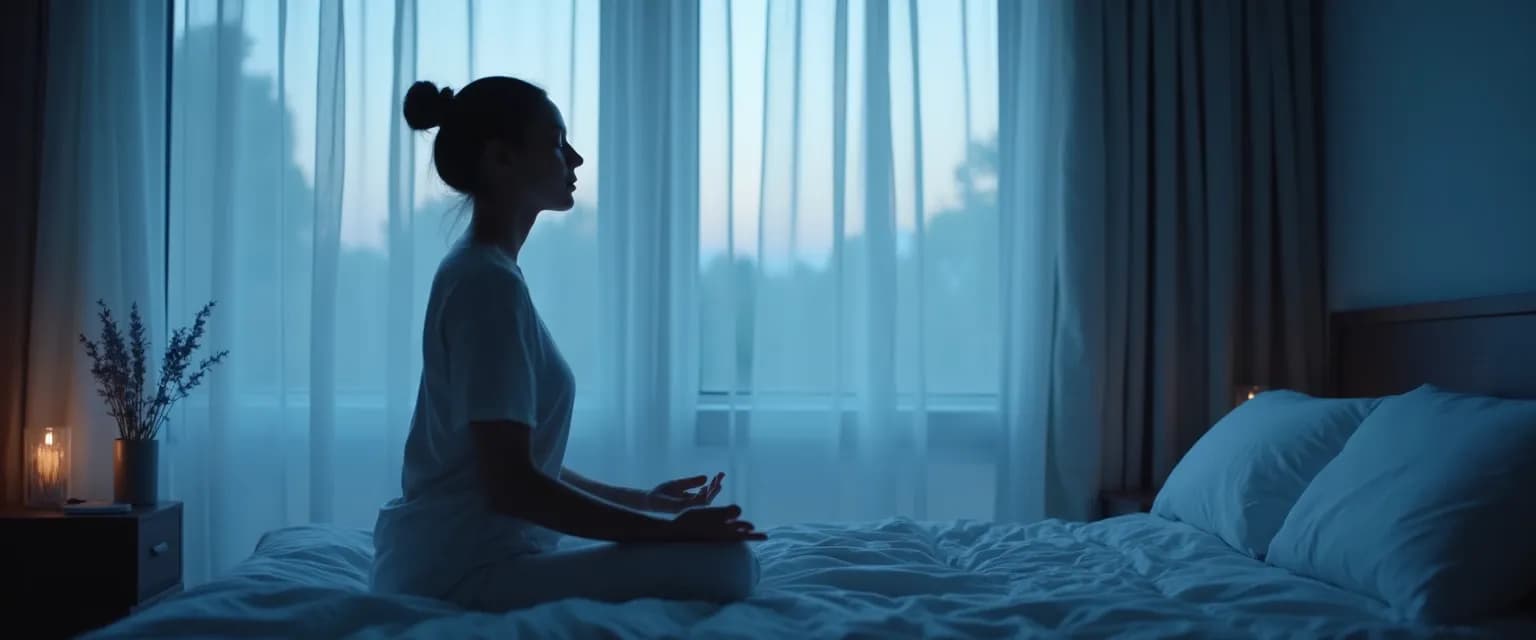Bedtime Breath Work: Mindfulness Meditation for Sleep and Anxiety Relief
Ever noticed how your mind races the moment your head hits the pillow? You're not alone. Implementing mindfulness meditation for sleep and anxiety techniques right before bedtime can transform those restless nights into peaceful slumber. These simple five-minute practices work with your body's natural systems to quiet the mental chatter that keeps you tossing and turning. The beauty of bedtime breath work is that it requires nothing but your attention and a few minutes of your time—perfect for even the busiest days when you're exhausted but somehow still wide awake.
The science behind mindfulness meditation for sleep and anxiety is fascinating. When you practice controlled breathing, you activate your parasympathetic nervous system—the "rest and digest" mode that counters the "fight or flight" stress response. This physiological shift lowers cortisol levels, slows your heart rate, and prepares your body for deep, restorative sleep. A five-minute timeframe is ideal because it's short enough to feel doable when you're tired, yet long enough to trigger significant anxiety reduction in your brain.
What makes these techniques particularly effective for nighttime anxiety is their immediate impact. Unlike scrolling through your phone (which exposes you to sleep-disrupting blue light) or watching TV, mindfulness meditation for sleep and anxiety practices create a buffer zone between daytime stress and sleep, signaling to your brain that it's safe to power down.
3 Essential Mindfulness Meditation for Sleep and Anxiety Techniques
Let's explore three powerful breathing techniques that form the foundation of effective mindfulness meditation for sleep and anxiety practice. Each works slightly differently, allowing you to choose what feels most natural for your body.
4-7-8 Breathing Technique
This rhythm-based breathing pattern is renowned for its calming effects on the nervous system. To practice:
- Inhale quietly through your nose for 4 seconds
- Hold your breath for 7 seconds
- Exhale completely through your mouth for 8 seconds, making a whooshing sound
- Repeat this cycle 3-4 times
The 4-7-8 technique works by extending your exhale, which helps release tension and triggers the relaxation response in your brain. It's particularly effective for those racing thoughts that seem to accelerate as soon as you lie down.
Box Breathing
This technique creates balance and stability through equal-length breaths:
- Inhale through your nose for 4 seconds
- Hold your breath for 4 seconds
- Exhale through your mouth for 4 seconds
- Hold the empty lungs for 4 seconds
- Repeat 3-5 times
Box breathing is favored by military personnel and first responders for managing acute stress. For sleep preparation, it helps quiet mental chatter by giving your mind something rhythmic to focus on.
Diaphragmatic Breathing
Also called belly breathing, this technique engages your diaphragm fully:
- Place one hand on your chest and one on your belly
- Breathe in slowly through your nose, ensuring your belly (not chest) rises
- Exhale slowly through pursed lips, feeling your belly fall
- Repeat for 5 minutes, focusing on the sensation of your breath
Diaphragmatic breathing directly activates the vagus nerve, which controls your parasympathetic response. This makes it particularly effective for physical manifestations of anxiety like a racing heart or tight chest that interfere with sleep.
Creating Your Nightly Mindfulness Meditation for Sleep and Anxiety Routine
The key to making mindfulness meditation for sleep and anxiety work consistently is integration. Rather than treating it as another task, weave it naturally into your existing bedtime routine. Position it after brushing your teeth but before reading or right after turning off the lights—whatever creates the most natural transition into sleep for you.
Consistency becomes easier when you anchor your practice to physical comfort. Create a dedicated position that supports relaxation—whether that's lying on your back with a pillow under your knees, curling on your side, or sitting up against your headboard. Your body will begin to associate this position with the calming effects of your breathing practice.
How do you know it's working? Look for these signs of improvement:
- Falling asleep more quickly (within 20 minutes of lying down)
- Fewer middle-of-the-night wake-ups
- Feeling more refreshed in the morning
- Decreased anxiety during the day
When obstacles arise—and they will—keep solutions simple. If you're too tired to complete a full five minutes, even one minute of intentional breathing helps regulate emotions. If your mind wanders constantly, try counting each breath or silently repeating "in" and "out" with your breath. Remember that mindfulness meditation for sleep and anxiety is a practice, not a performance—each night is a fresh opportunity to support your sleep and well-being.




